Are you looking for ways to get more visitors to take a specific action on your website? Well, that's where Conversion Rate Optimization (CRO) comes in.
CRO is a process that can help improve your website's performance, and ultimately increase the number of visitors who take a specific action on your site. It does require an investment of time and resources, but the payoff can be significant — with improvements to your revenue and return on investment. Before diving into CRO though, it's important to determine if it's the right fit for your business.
In this guide to Conversion Rate Optimization for building materials companies, we'll take a closer look at CRO, why it's important, how it works and tactics to help you achieve the best results.
What is Conversion Rate Optimization (CRO)?
Conversion rate optimization (CRO) is an ongoing process for improving your website conversion rate by (1) using quantitative and qualitative data to look for ways to improve your website, (2) setting a hypothesis based on those data on how to improve the website, and (3) testing the new version of the website compared to the old one to see if it performs better or not.
The CRO process involves testing various page elements and tracking user behavior over time to improve page performance. In turn, a conversion rate optimization strategy can lead to substantial improvements in a company’s revenue and return on investment (ROI).
What's the Goal of Conversion Rate Optimization?
The goal of conversion rate optimization is to get more people to take a specific action on your website. Generating email sign-ups for your email newsletter might be a conversion goal you want to push your visitors towards. The desired action could also be reaching out to your representatives, scheduling a consultation, requesting a catalog or something else — but the ultimate goal of CRO is to convert as many visitors as you can.
Is CRO Right For You?
Before we get into the ins and outs of CRO, it’s essential to understand if CRO is even right for you — after all, it really isn’t for everyone. CRO is a level above the other efforts, as you need to:
1. Have the right (or big enough) budget: Unlike SEO, ads, social, etc., CRO cannot be trimmed down to accommodate every budget. Well, it can — but then it won't be CRO. CRO is more costly because it requires expensive, specific tools and services, the involvement of multiple teams including design and dev, coordination between different activities and initiatives and time.
2. Evaluate website traffic: The website needs to funnel a big number of traffic/users through the optimized section so CRO and testing can be successful. There is no point in doing CRO if the website lands only 5K users per month. It is better to spend that money in SEO/ads because doubling the traffic to 10K will bring much more conversions than improving the CR% for 50% on 5K visitors.
3. Complete Testing: Testing (or applying frequent and constant design changes) means that the design/dev team will need to be involved quite frequently — this increases costs significantly. Again, for 5K visitors, this is not the best way to spend the money.
Once you’ve determined if CRO is the best route for you, then it’s time to learn more about its importance, how it works and helpful tactics to get the best results.
Why Is Conversion Rate So Important?
The absence of a conversion rate optimization strategy will directly impact your company’s sales and revenue. The right strategy can help you accomplish all of the following:
Boosts Leads and Sales
Conversion rate optimization ensures that your webpages are nurturing leads and that information, navigation, and content are all in the right place so a user doesn’t have to go searching for them when they’re reading to take action. When users get the exact information they need, conversion is the natural next step.
Improves Customer Satisfaction
Leads find their way to your business because they have a need they’re trying to fulfill. Conversion rate optimization helps your business finetune its messaging based on your audience’s specific pain points and requirements. As a result, your leads will spend less time looking for a solution, and they’ll be left with the correct impression that you truly understand their needs.
Provides Better Insights Into Your Customers
When you understand your leads better, you can remove the high-level content they might not need and start investing your effort into producing specific, actionable and high-value content they’re searching for. Whether it’s a catalog, brochure or case study, conversion rate optimization will help you understand what your leads want and where they expect to find it.
Makes Your Products Easier To Sell
Because conversion rate optimization pushes your business to develop specific messaging around your ideal buyer persona(s), selling your products becomes substantially easier. Conversion rate optimization also makes you focus less on features and more on benefits, shifting the focus from what you do to how you can help.
Helps You Create Better Ads
The mindset and language shift that accompanies a solid conversion rate optimization strategy will streamline the process of writing and targeting your ads. As a result, you’ll waste less money on fruitless campaigns, and you’ll see a higher conversion rate once you dial in your messaging and demographics with the data you’ll gain through the CRO process.
Increases Your ROI
When it becomes easier to convert leads to customers, the cost of acquiring a new customer is reduced. Meanwhile, when you get specific with your targeting, you’ll find that your ads drive a higher number of qualified leads to your website. All around, conversion rate optimization increases the return on investment for all of your campaigns.
How to Calculate Conversion Rate
Conversion rate requires you to have two data points: the number of visitors your website has received and the total number of conversions. Take the number of conversions and divide it by the total number of visitors, then multiply it by 100 to get a percentage.
If you have years of historical data, you should limit your conversion rate calculation by a given timeframe. Looking at year-to-date or the conversion rate since your last major site overhaul would be a good starting point. Once you know your current conversion rate, you can use it as a benchmark going forward.
Many businesses grow overly concerned with the average conversion rate for different goals or industries. However, this information is hard to find and largely unreliable due to all of the potential variables. For this reason, while you may be curious to know what the average conversion rate is for other building materials companies, you shouldn’t use any such data in your strategy.
Your current conversion rate is the best metric you can use to guide your conversion rate optimization strategy. Use your current conversion rate to establish a benchmark that you can compare to going forward as you make changes in an attempt to improve your conversion rate.
Why Is Tracking Your Users’ Actions Important For Measuring Conversion Rate?
Data collection and tracking are essential for CRO — you cannot achieve a high-quality CRO without a solid data collection strategy and accurate tracking setup.
Tracking conversions is based on relevant collected data from your users — without having this data, you can’t see the preferences of your audiences. This means you cannot provide products and services that would interest them and increase the conversions on the website.
What Are Some Metrics to Look at When Measuring Conversion Rate?

A number of metrics are important when measuring conversion rate. However, there are two primary metrics you need to pay attention to:
The number of visitors per day, week or month
The number of those visitors who converted
Because the conversion rate is expressed as a percentage, you need to know the total number of conversions to get the full picture. For instance, any two sites might have a 3% conversion rate, but one might generate 300 conversions a day while the other generates 30.
14 Conversion Rate Optimization Tactics

There is no one-size-fits-all conversion rate optimization process. Understanding metrics like the percentage of visitors that convert or the types of visitors you are getting on your website is an important first step in CR optimization, but you must also understand how the various pieces fit together.
The conversion funnel helps you envision the user journey from the awareness phase (top of the funnel) to the point of conversion (bottom of the funnel). Checking where your content fits into the funnel will help you ensure a logical flow and reveal “leaks” in the funnel where you need additional content to compel a lead toward conversion.
1. Test Everything Before Implementing
This step is essential for CRO. You need a data-backed baseline of how your site is currently performing to identify potential problem areas and to help you set clear goals. This also helps you strategically track any improvements your site makes after implementing CRO.
2. Use Analytics Software to Track and Gather Data
Analytics software is often the primary source of key metrics, like average time spent on site and the number of pages visited per session. Setting up the appropriate tracking pixels — and that they’re tracking a user’s actions correctly — will ensure you have reliable metrics to work with.
Optimizing the navigation menu by decluttering, simplifying and avoiding cryptic language has a direct impact on a visitor’s willingness to stay on your site and engage with your content. If your menu is hard to navigate or non-responsive on certain devices, users are sure to leave.
4. Make Form Submissions Seamless
When a user is ready to submit their information, either in a contact form or signing up for your email newsletter, you need to make the experience as straightforward and simple as possible. Remove unnecessary fields, enable autofill and make sure your forms load quickly on all devices.
5. Mind Your Page Load Times
Visitors don’t have time to waste waiting for your slow website to load. It’s been shown time and time again that people have a very low tolerance for slow websites, so aim for a load time of under five seconds for every page. Caching tools can help you speed your site up.
Your users should not have to go searching for the right button when they decide to take action. Your call-to-action button should be placed in multiple areas, including above the fold (top of the page), at appropriate intervals throughout the page and at the very bottom of the page.
7. Use Clear Language To Describe the Benefits of Your Services
Shifting from feature-focused to benefits-focused will automatically help you engage more people and relate to their needs. However, be careful to avoid language that leans too heavily on the specifications or specific details of your solution. Conversational, straightforward language is going to make the greatest impact.
8. Make Sure All Links Lead Directly to the Desired Destination
When a person clicks a button or navigational link on your website, they should immediately arrive where they expect to be. Avoid redirects and nested content that can confuse and frustrate users. For example, if you have a top-level page with sub-pages under it, make sure those sub-pages are directly accessible in your menu.
9. Include a Video Demonstration of Your Product or Service
Video is one of the most engaging content formats on the web. A video demonstration can answer a myriad of questions and help pique interest in your product or service right away. Some of the best practices for video include adding on-screen closed captions (as many people watch on mute) and keeping it under a minute with additional videos linked as necessary.
10. Create a Landing Page for New Subscribers
If someone has just signed up for your email newsletter, where do you send them after they share their email? Ideally, you’ll redirect them to a landing page that welcomes them to your email list and takes advantage of the fact that they are currently very interested in your business by offering additional information and another call to action.
11. Offer a Discount for Early Adopters
If you are launching a new product or service, sparking initial interest is often one of the toughest goals. Discounts and similar perks can encourage people to take action and become early adopters, even if you don’t have case studies, testimonials or other social proof to share yet.
12. Show Testimonials From Happy Customers
Customer testimonials are one of the best kinds of social proof as they allow a like-minded individual to share exactly how a product or service impacted them in a relatable, authentic way. Requesting testimonials from your customers and implementing them throughout your site will help you settle doubt in the minds of your leads.
13. Give Away a Free Sample
Free samples are an easy way to collect information from your leads so that you can start marketing to them while also giving them something that showcases your business’ commitment to quality and satisfaction.
14. Feedback From User Testing
Customer surveys are a powerful tool for collecting user feedback that you can implement into your conversion rate optimization strategy. You can also conduct intensive user tests with volunteers who are willing to share their screens as they navigate your site and narrate their thoughts on your content and layout.
Top Conversion Rate Optimization Tools
There are three primary types of conversion rate optimization tools you can utilize to give your team actionable insights on how your digital marketing strategies are impacting user behavior and conversions.
As you take steps to optimize CR, the ultimate goal is to use these tools to measure the improvements that result from changing wording, fonts, colors and layouts.
Web Analytics
Web analytics tools provide insights into what's happening on your site.
Google Analytics
Google Analytics is the most popular web analytics tool, and it will help you track hundreds of metrics including average time spent on page and number of pages visited per session. Google Analytics is also the best multi-attribution tool, allowing you to collect data from across websites.
Heap
Heap is the fastest way to visualize your customer journeys so that you can make sure your users are getting the right content in the right places. With just one snippet, it provides the most complete data. The only downside is that it isn’t free.
Adobe Analytics
Adobe Analytics is a strong contender for user pathing and reporting. By recording all of the actions taken on your site and allowing you to explore it in detail using an Excel spreadsheet, Adobe Analytics provides a technical interface for reviewing site data.
Behavior Analytics
While web analytics help you understand who is coming to your website, behavior analytics dives beneath the surface to reveal how users are interacting with it.
Hotjar
Hotjar is another heatmap tool that combines a visual heatmap with feedback tools to help you dial in the customer experience based on your specific users.
FullStory
By combining qualitative and quantitative data, FullStory aims to eliminate data gaps and give you a complete picture of how your users interact with your website.
Lucky Orange
Through heatmaps, session recordings, surveys and other online tools, Lucky Orange helps increase your site’s conversion rate and collects insightful data on those that visit your site.
CRO Testing
Conversion rate optimization testing tools help you keep track of different variables so that you can understand the true impact of every change you make. The following three CRO testing tools are recommended by Google as Google Analytics (after Optimize sunsetting) will be directly integrated into any of these.
Crazy Egg
Crazy Egg combines a visual heatmap with a wealth of analytics to help you track user behavior. With Crazy Egg, you can even look at a specific user’s journey on your website, which is extremely valuable for conversion rate optimization.
VWO Testing
VWO Testing is ideal for running A/B tests across your website. By displaying different versions to different segments of your audience, you can compare the layouts, wordings and placements that perform best. Split testing also allows you to make improvements much faster as you can compare multiple versions at once.
AB Tasty
AB Tasty allows marketing, product and engineering teams to collaborate and improve user experience across digital platforms using omnichannel strategies. With AB Tasty, you can A/B test different marketing ideas to gather engagement data and discover what works best for your audience.
What Are Some Common Mistakes to Avoid When Doing Conversion Rate Optimization?
Conversion rate optimization requires a calculated strategy and a handful of metrics in order to see real, consistent results. Here’s a look at some of the most common mistakes you should avoid when planning for CRO.
Not Having a Goal
If you don't have a specific goal in mind, there is nothing to optimize for. Define your conversion goal and start figuring out what that conversion is worth to your business before moving forward.
Focusing Too Much on One Element at a Time
If you try to optimize one element at a time, you’re going to end up investing far too much time and energy into the CRO process. Make use of split testing tools so that you can effectively test multiple elements and versions at once.
Testing Only One Type of User
Your website gets many different visitors and each one has various needs and priorities based on where they came from. Keeping the referral source in mind will help you avoid going back and forth with a CRO strategy that only seems to work half the time.
Guessing Instead of Measuring
You won’t get anywhere fast with your CRO strategy if you just start taking your best guess. Metrics should drive everything you do when it comes to conversion rate optimization. Make sure that you establish the right tracking tools in advance and set benchmarks on how your current site is performing.
Not Measuring Results
Setting benchmarks is an important first step, but you need to continuously check your results against those benchmarks or else you won’t truly understand how a change has impacted the conversion rate.
Not Testing Enough Variations
Testing a few variations is a start, but you need to keep going until you figure out what’s going to give you the greatest improvement. A small improvement is certainly something to celebrate, as it means you’re moving in the right direction. However, continued multivariate testing will help you figure out a winning combination that drives the biggest results.
Not Tracking Everything
When optimizing for conversion rate, you can’t leave anything up to chance. Every single variable needs to be tracked or you’ll end up getting frustrated over inconsistent results. Implement tracking for all variables from the get-go so that you can identify patterns sooner.
Not Testing on Mobile Devices
Over half of all web traffic today comes from mobile devices, so don’t try to ignore mobile traffic when optimizing your CR. All of your tests need to run across all devices in order to give you a true representation of how a change will impact your business’ results.
Not Testing on Multiple Platforms
Just as you need to test across all devices, you also need to test across all operating systems and browser versions to ensure a consistent user experience. If a separate test is necessary to ensure things work right for everyone, put in the effort or else you won’t have reliable results.
Final Thoughts
Conversion Rate Optimization is a crucial process for building materials companies looking to improve their website's performance and increase revenue. With the right strategy, CRO can help boost leads and sales, improve customer satisfaction, provide better insights into your customers, make products easier to sell, create better ads and increase the ROI for all campaigns.
By implementing a strong CRO strategy, building materials companies can achieve long-term success, improve their bottom line and stand out in a competitive market. So, are you ready to optimize the conversion rate on your website? Schedule a call with one of our strategists today.
FAQs
What is an example of a conversion strategy?
A conversion strategy involves optimizing your website to push users towards a specific action, like signing up for your newsletter or making a purchase.
What does optimizing for conversion mean?
Optimizing your website for conversion means making changes to the content and layout with the goal of getting the highest number of visitors to perform a desired action.
What is a realistic conversion rate?
Conversion rates vary by industry, but a good target is between 2% and 4%. This means for every 100 visitors your website gets, you get two to four conversions.
How can online conversion rates be improved?
Online conversion rates can be improved by optimizing your website’s design, strengthening your messaging and tailoring your content to the needs of your ideal customer.
How can I improve my ecommerce conversion rate?
You can improve your ecommerce conversion rate by improving page layout, using professional images, writing detailed product descriptions and ensuring the checkout flow is frictionless.








